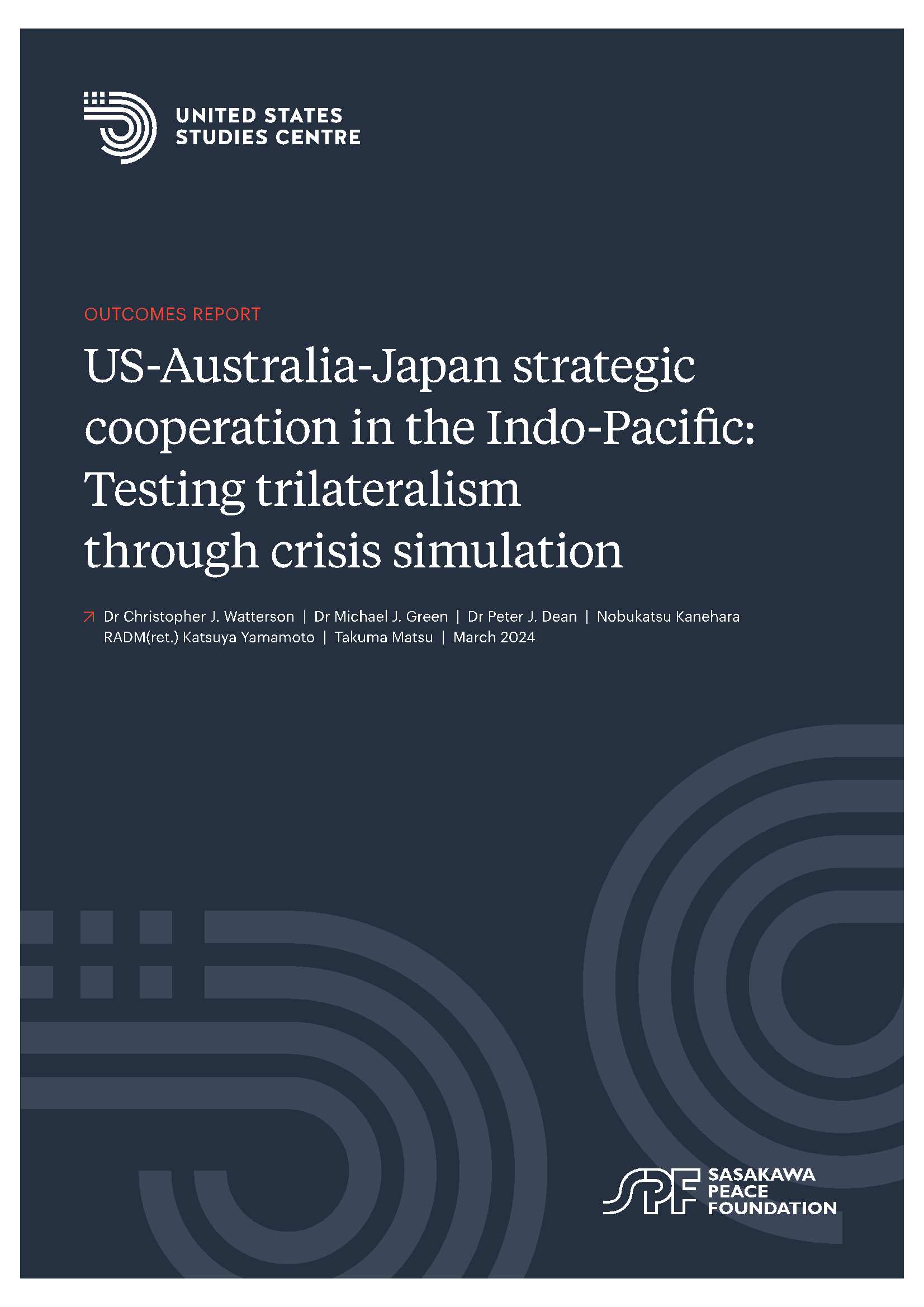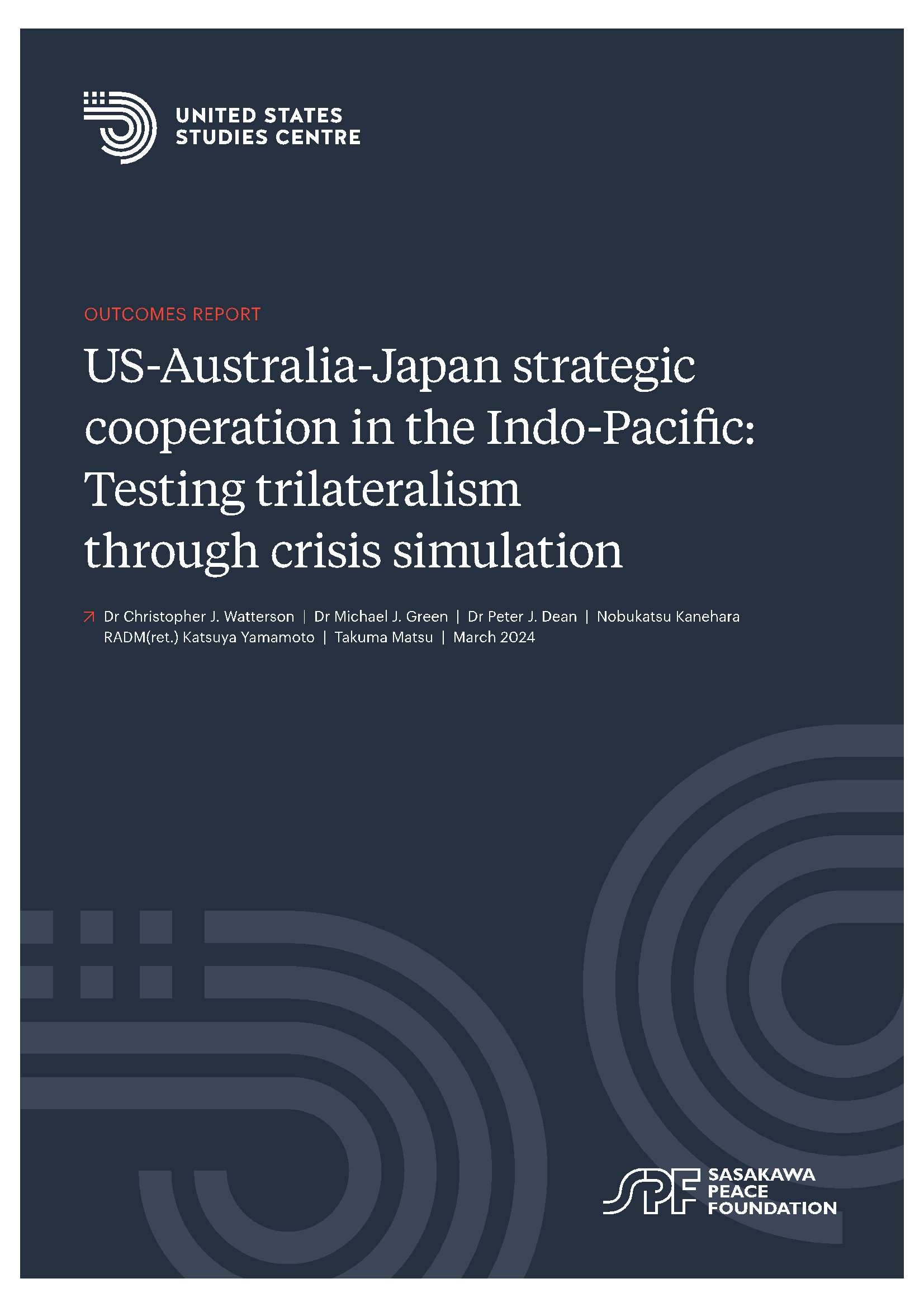The Sasakawa Peace Foundation, in collaboration with the United States Studies Centre (USSC) at the University of Sydney, conducted a strategic simulation on strategic crises in the Indo-Pacific region. This simulation focused on two interrelated crises: the Taiwan Strait crisis and the Korean Peninsula nuclear crisis. Japan, the United States, and Australia pursued de-escalation, military hedging, and engagement with relevant countries. The United States faced a dilemma between demonstrating the credibility of its regional security commitments and avoiding unnecessary escalation. While each team's priorities and risk tolerances differed, the importance of involving international stakeholders was emphasized, highlighting the significance of U.S. leadership. Despite differing interests, the three countries demonstrated remarkable ability to compromise and adjust policies, underscoring the trust among the teams.
This simulation included senior experts such as current and former members of parliament, ambassadors, flag officers, and senior government officials. The purpose of the report is to provide crucial insights that contribute to peace and stability in the Indo-Pacific region.
Click
here to download the report.
※You can read Japanese version
here.

